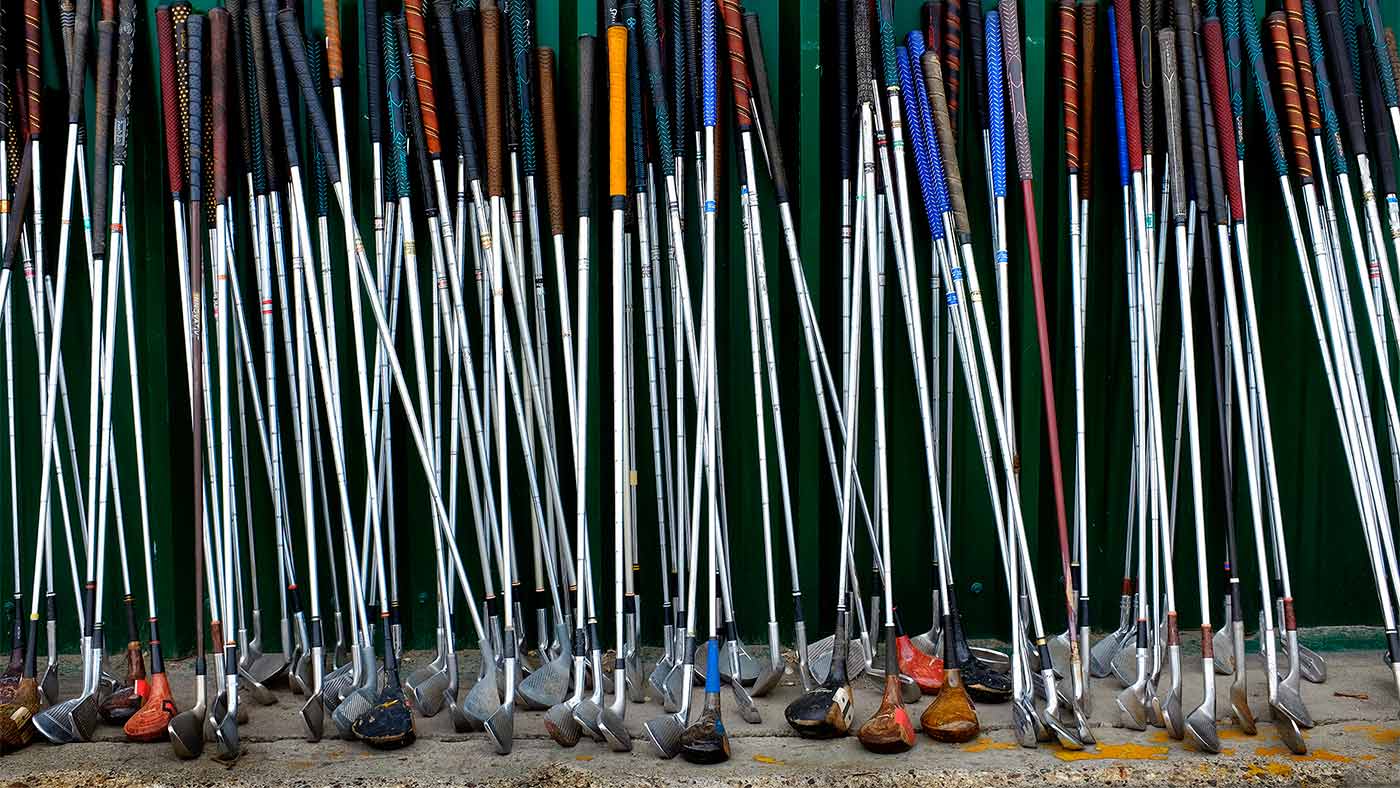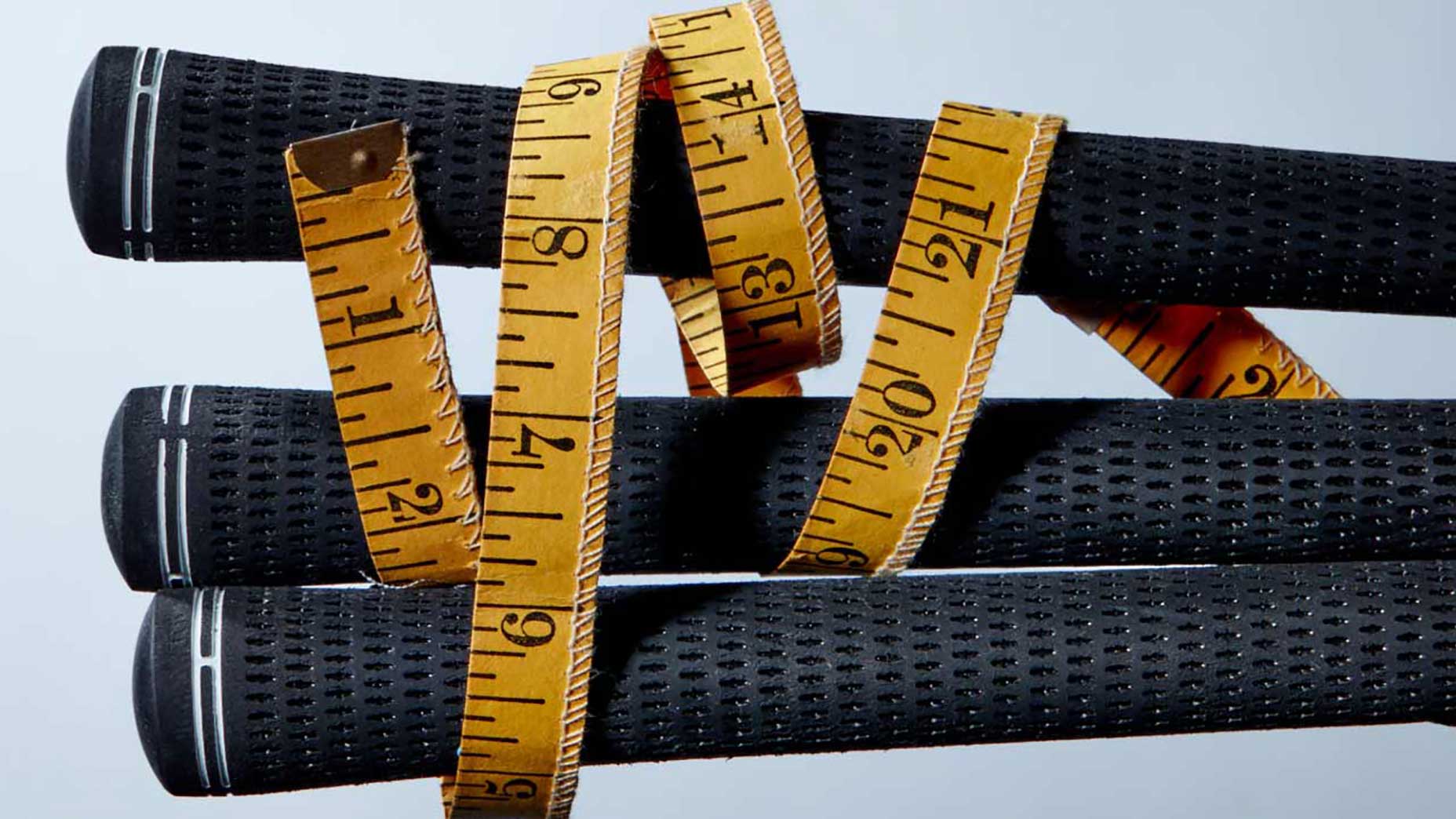Congrats, you got much better at golf in 2021! But now it’s time to take your game one step further this offseason. That’s right, we’re talking about targeting that magical number most golfers set their sights on: a score in the 70s. Here, in our eight-step guide to breaking 80, we’ll speak to experts, pros and more to create the perfect plan for you to take your game to the next level.
Step 1: How you’re ruining your round before you tee off
Step 2: How to stop wasting your range warm-up
Step 3: How to play the right tees for you
***
Step 4: Fix your equipment
While buying a new club isn’t always the solution to your golf game’s ills, your current clubs could be causing problems in your game without you even realizing. Here’s a few things you need to do if you want to employ some new clubs in the near future.

1. Get fit
The first and most important point along these lines is to get fit for clubs. It’s something we really believe in around these parts, and for good reason. Think about it this way: If you want to look your best in a suit, you may be lucky enough to find one off the rack that fits you perfectly down to the inch. But for 99 percent of other people, in order to look good, you need get that suit tailored.
Tailored, or custom fit golf clubs means adjusting the length, weight, and lie angle of the club so it fits your swing. It also means trying lots of different brands whose innovative tech may be better suited to your unique needs.
A through-the-bag fitting from a reputable clubfitter, like our affiliate company True Spec, is the place to start if you’re looking for an overhaul. But we also understand that shelling out may not be the best option for everyone, which is good news, because it’s not the only piece of gear advice we have for you.
2. Target your weaknesses
As I wrote about alongside our gear masterminds, Jonathan Wall and Andrew Tursky, I tend to default to saying a driver fitting is the one golfers should be first to get. But my real answer is to take a hard look at your game and work backwards from your weaknesses.

3. Keep an open mind
When it comes to buying new clubs, I’d always endorse keeping your options open. That doesn’t just mean with certain brands, but also with the kind of clubs you’re using.
That means considering graphite shafts in your irons over steel, game or super game improvement irons and more flexible shafts. Take Harry Higgs’ advice and put your pride to one side. Your game will be better for it.
4. Stick with one putter
Full disclosure on this one: I am TERRIBLE at not tinkering with my putters. But I’m really going to try to stick with the one I currently have in my bag in 2022, because if you want to improve on the greens, you need to stick with one flatstick.
Getting fit for one is a good place to start, but once you find one you like, follow Dave Pelz’s rule: Stick with it for at least three months before switching. That gives you enough time to adjust to the weight and balance of the putter.

5. Bounce is your friend
When people talk about bounce in their clubs, they’re talking about the width of the soul on the bottom of your wedges. The amount of bounce you should use depends on your swing and the conditions you tend to play in. But more bounce on your wedges means they’ll be less prone to digging. Generally speaking, that means that for many golfers, more bounce is your friend.
6. Don’t overlook your grips
You are connected to the golf club in one way: Through the grip. So stop overlooking how important they are. I always regrip my clubs once per year, and when you do, take extra care to pick the ideal size for you. It can affect the ball flight more than you might expect.

7. Don’t forget about the golf ball
Please, don’t be tempted to fall into the trap of thinking you’re not good enough to care about what type of golf ball you should use. You can get fit for golf balls too, and even if you don’t, you should find a ball you like and stick with it for the season. You’ll start to understand how your ball will react hitting into greens, both from the fairway and with a wedge in your hands.

